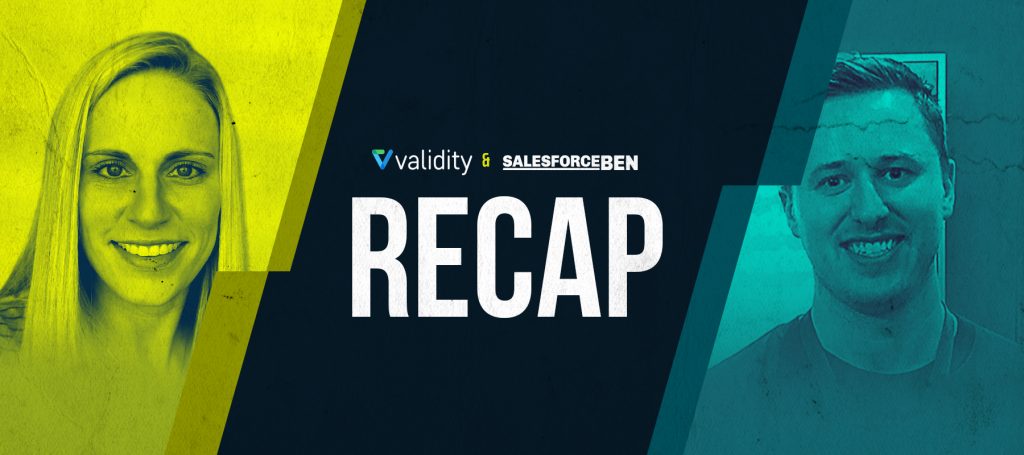Last week, we hosted a webinar featuring Ben McCarthy, creator and namesake of the popular blog Salesforce Ben, and Olivia Hinkle, senior product marketing manager from Validity. The 30-minute free webinar laid out exactly what data managers need to do to achieve cross-functional success and the benefits that come from each department being a stakeholder in the management of business data. After all, if you use the data, you are responsible for its quality too. The presentation was chock full of great information, and after, we shared a one-pager summarizing steps and tips to follow, so we highly encourage you to watch the recording available here. But if you’re strapped for time, here are the three biggest takeaways you can use right now.
Create an infrastructure in which leadership and all teams agree and believe data quality is important.
Get everyone on the same page right off the bat. Ideally, the leadership of your organization has set up a standard that makes it clear why data is important and worthy of getting right. But first and foremost, make sure everyone involved is aware of their roles, why they matter, and how they can contribute to success.
Though irritating, duplicates can be the perfect starting point for better, more effective teamwork.
Surely no one wants to focus any more time and energy on duplicates than they already do. But, because they’re so prevalent and often the main issue Salesforce users face, this is a great topic to tackle using a cross-functional approach. Why? Because they’re easy to understand! By explaining how and why duplicates corrode data quality, you can have meaningful and effective conversations with people of all disciplines about data quality and why it matters to the organization as a whole. Once everyone gets it and agrees they can work together to reduce duplicates and uphold better data quality standards, you’ve already built a foundation for success.
Document the “Why.”
It might sound unnecessary, but when you’re working toward a cross-functional team approach, you’ll want everyone to understand the why and how. Save time by being able to reference why you’re collecting the data you are, why you use the processes you use, and how everyone can work together to achieve your data quality goals. It’s an easy place to direct people to when they have questions, or even when you yourself are trying to piece together questions you may have.
This only scratches the surface of what they covered last week, so you should probably watch the whole webinar recording here. Trust us, it’s worth the time spent! Also, when you’re ready to put these tips into use, reference this handy one-pager to keep you on track: Tips for Managing Data as a Team.
